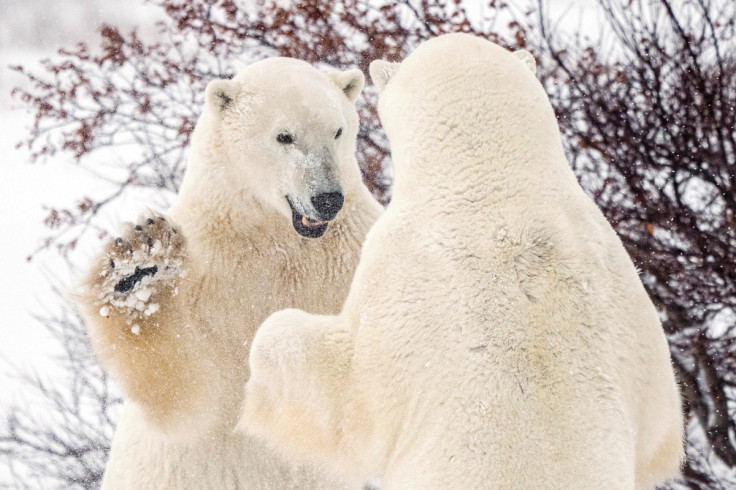International Polar Bear Day 2023: Fun Facts, Harsh Truths About The Ice Giants
The world will observe International Polar Bear Day on Feb. 27. If you love these cuddly-looking bears with dangerous paws and a lethal bite, then this is the annual event you can get behind.
The winter months are also the birthing period for pregnant polar bear mums, who build dens in the snow to give birth and nurse their babies. These cubs are born blind, are devoid of hearing, have no hair on their bodies to protect themselves from the Arctic conditions, and weigh just a pound. These cubs are extremely vulnerable at birth, and snuggle with their mums before finally emerging in March and April.
Only half of the cub population lives to reach the adult stages, where they face dangers of the warming Arctic climate due to global warming.
International Polar Bear Day was introduced by Polar Bears International (PBI) in 2011. The organization focuses on polar bear conservation by raising awareness about the issues faced by these mammals, and what can be done to protect them.
Here are a few fun facts about these mighty giants, who will melt your heart but eat it too if you get too close.
Do you know the speed at which they can chase their prey? Brace yourself! The polar bear can reach speeds of 40 km per hour. To give you a perspective, they can run as fast as a German Shepherd dog or a cat.
Polar bears also have a bite force greater than the largest predatory fish on the planet, the great white shark. The average human's bite strength is 162 pounds per square inch compared to the polar bear's stunning 1,235 pounds per square inch, Greenpeace reports. Its pristine white body, as it appears to the human eye, is actually black on the inside. The polar bear's skin is black and is covered by pigment-free transparent hair which reflects light, and gives them a white appearance.
Polar bears are extremely important for the sustenance of the Arctic ecosystem. To protect the species, which face man-made and natural dangers alike, PBI has resources to educate the public regarding the same. To help these animals, one need not make a trip to the Arctic.
Changes can be brought about at home as well. Small steps like using a bicycle instead of the car, and dialing down the thermostat temperature, in the long run, will help bring about a difference.

© Copyright IBTimes 2024. All rights reserved.






















